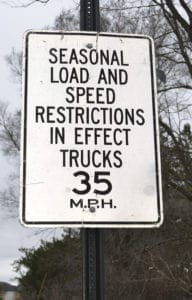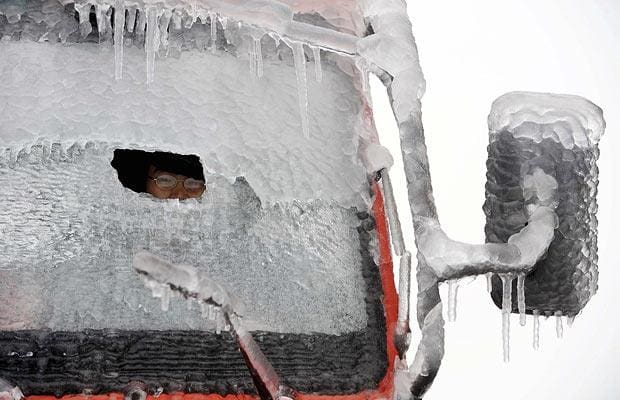By March, frosty windshields aren’t usually a concern this far south, but with two surprise snows and some mild temperatures recently, the following is helpful, even here in Nashville. If you’re traveling in the north or higher altitudes – this will be helpful, too.
Tunnel vision occurs when a driver scrapes off only a small area of ice and/or snow on their vehicle windshield to allow just enough space to see through a small hole as they drive. This practice significantly reduces a driver’s field of vision and greatly increases their risk of collision. The Kansas Highway Patrol estimates that drivers who do not clear their entire windshield of ice, snow and fog limit their field of vision to only about 2 to 3 percent of what a driver with a clear windshield can see.
In a recent survey conducted by the Center for Safe Driving found that more than 50 percent of drivers admitted to not fully clearing snow or ice from the windows of their vehicles. As a countermeasure, many states have enacted laws requiring drivers to make reasonable efforts to remove snow or ice from their vehicles, and numerous law enforcement personnel across the country are planning to target drivers who do not clear their windshields this winter. As part of your pre-trip inspection you should make sure that the windshield, side windows and mirrors are clear of any snow, ice or fog before starting your route or trip. Another dangerous situation that exists is chunks of snow or ice flying off the top of your vehicle and landing on other vehicles behind you. These chunks can be quite heavy and become dangerous projectiles that can cause crashes, injuries, and deaths. If heavy snow is forecasted it is recommended that you pull your unit away from the dock or terminal building so a drift of snow does not build up from the roof of the building to the top of your trailer or truck. As a professional driver, it is important to recognize this unsafe act in other drivers and be prepared to avoid a collision and stay out of their way.
 Frost Laws in 16 States and 9 Provinces!
Frost Laws in 16 States and 9 Provinces!
Spring weather often creates driving challenges. Specifically, the change in ground temperature can damage roads and vehicles and result in “roller coaster” rides from “wavy roads.”
Consequently, motor carriers need to monitor the many state and provincial spring weight restrictions or risk damage to the road and/or the rig.
Be ready for an alternate route
In order to preserve the integrity of the roadways, many states impose seasonal weight restrictions as early as late February and some lasting into May.
As drivers travel through regions that are experiencing spring thaws, they need to watch for posted signs indicating allowable weights. Signs may also indicate a reduced speed limit.
Trip planning may involve visiting some state websites to know if a specific highway is accessible to your vehicles. In addition, if a driver comes upon a weight restriction, he or she will need to find an alternative route, possibly contacting dispatch for assistance.
To ignore postings may result in more than just fines. It may result in damage to the roads, your vehicle, and/or cargo, and could result in an accident if the roadway is difficult to maneuver. To view the laws in states and provinces Click Here.
Originally posted on the Idealease Safety Bulletin.

